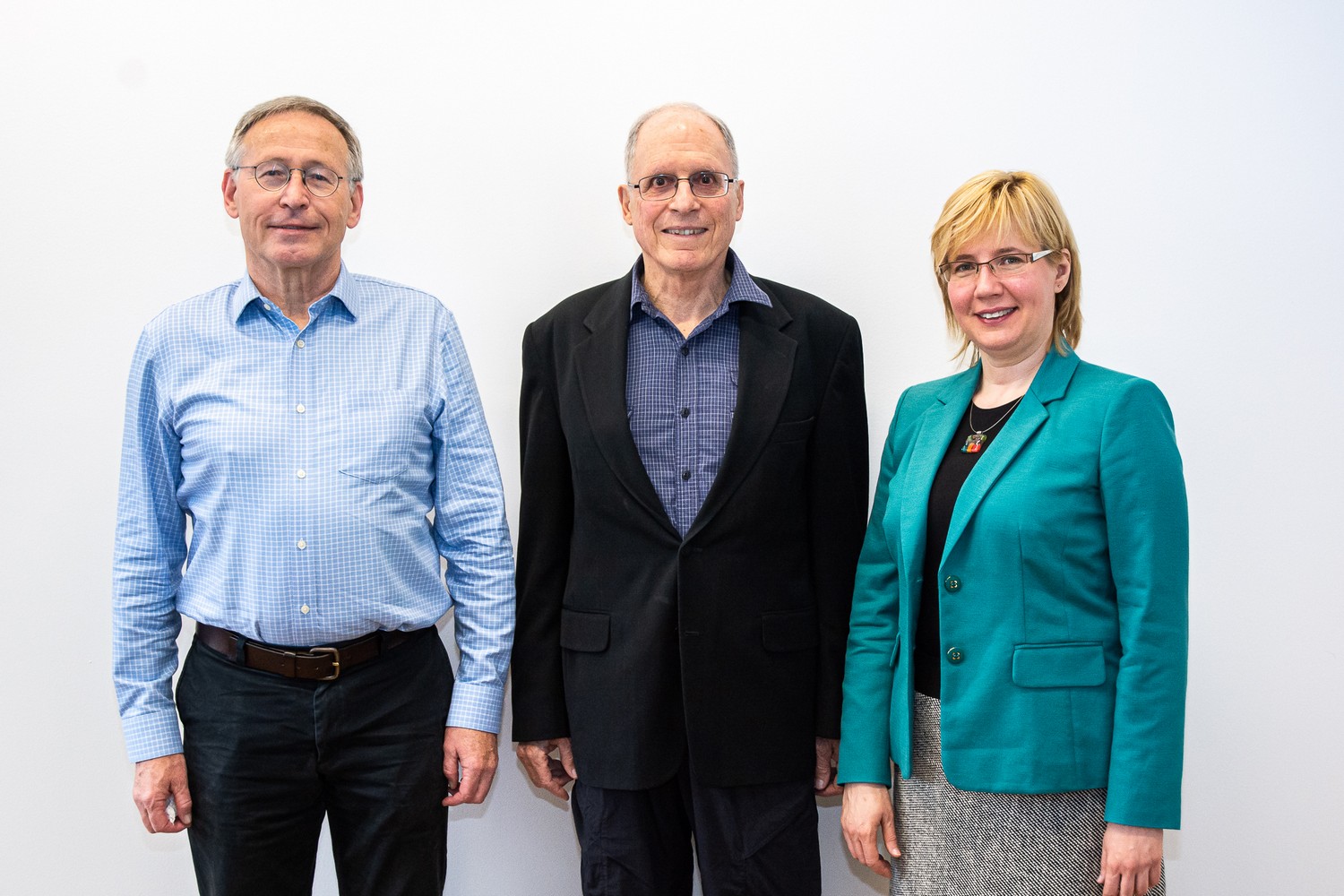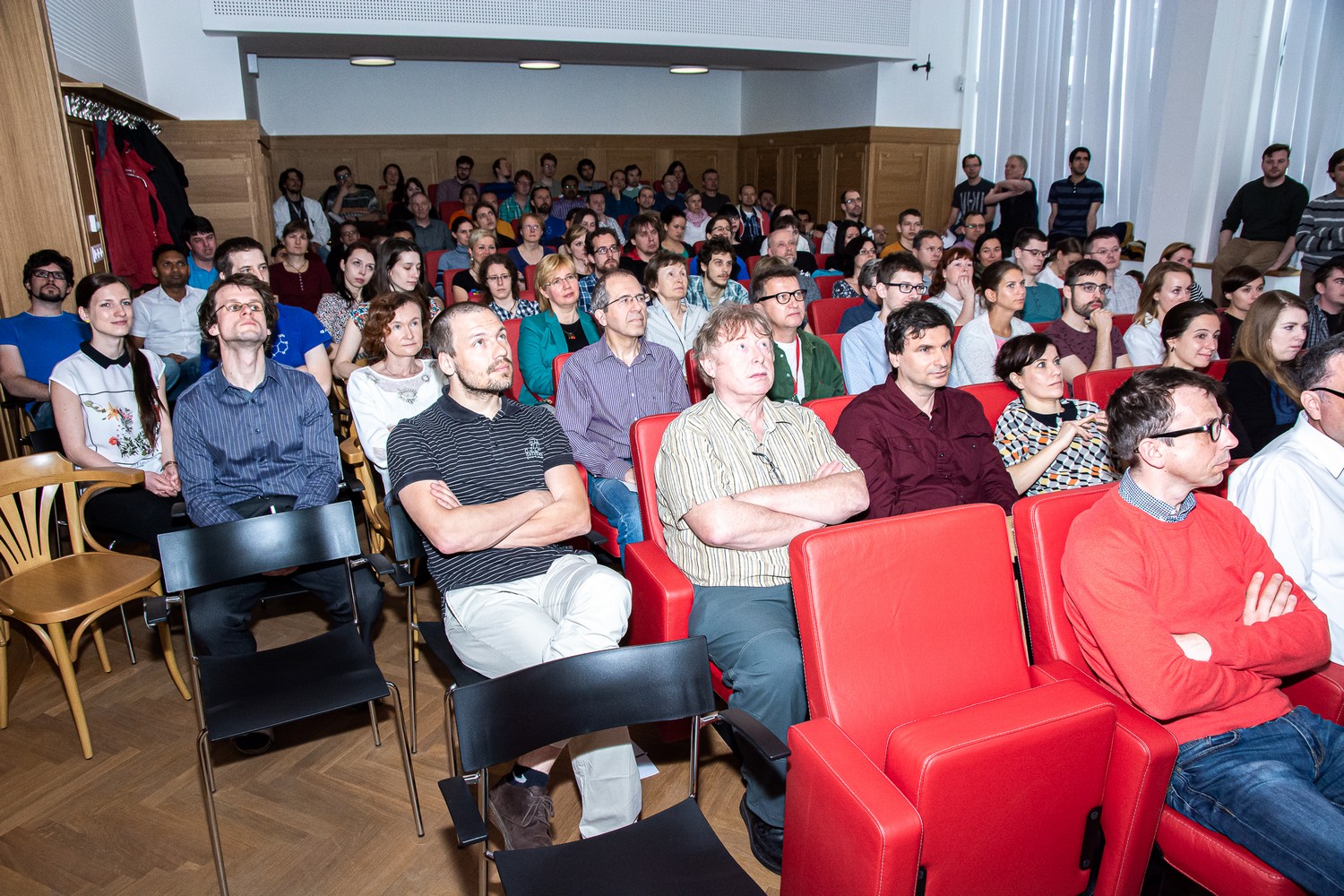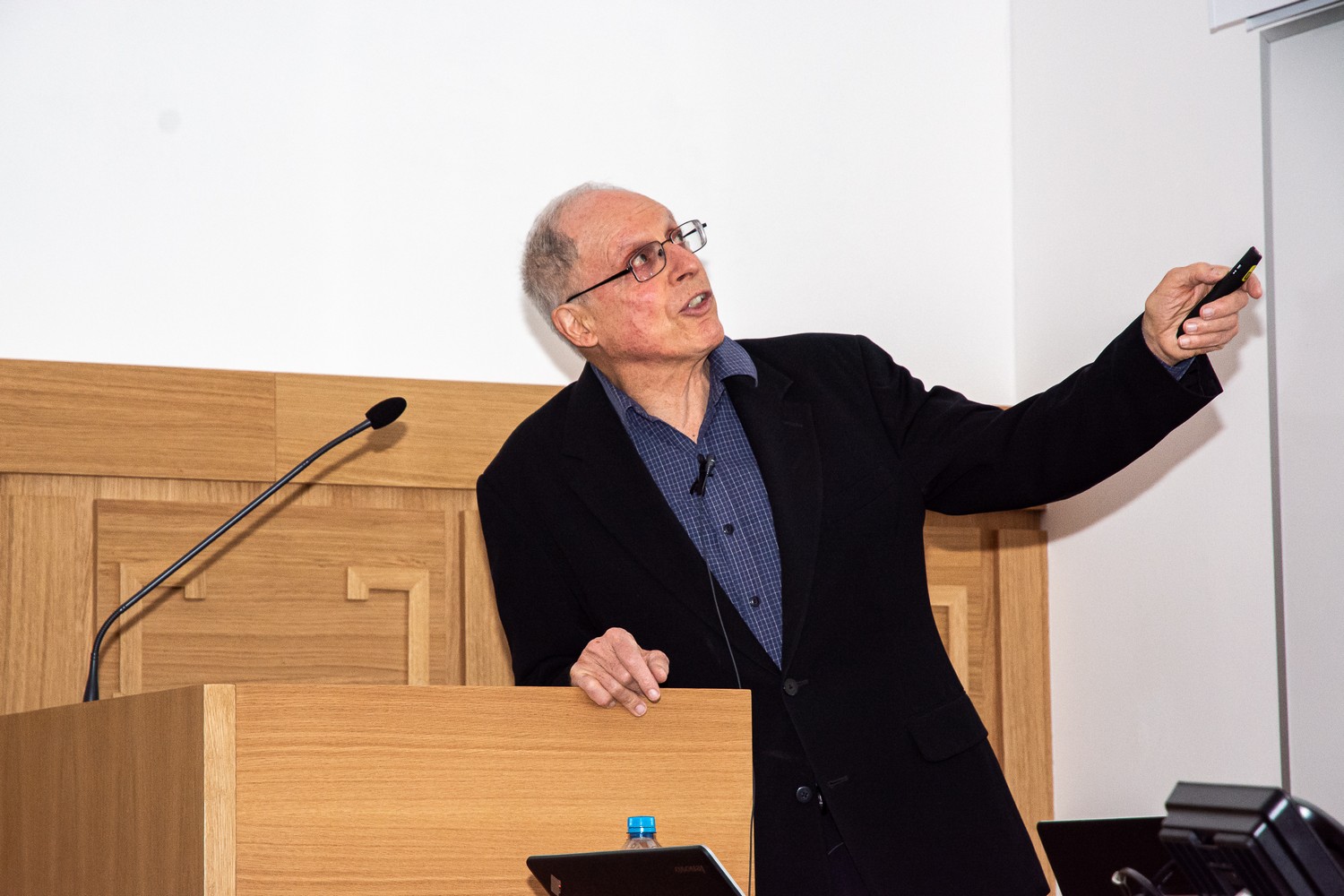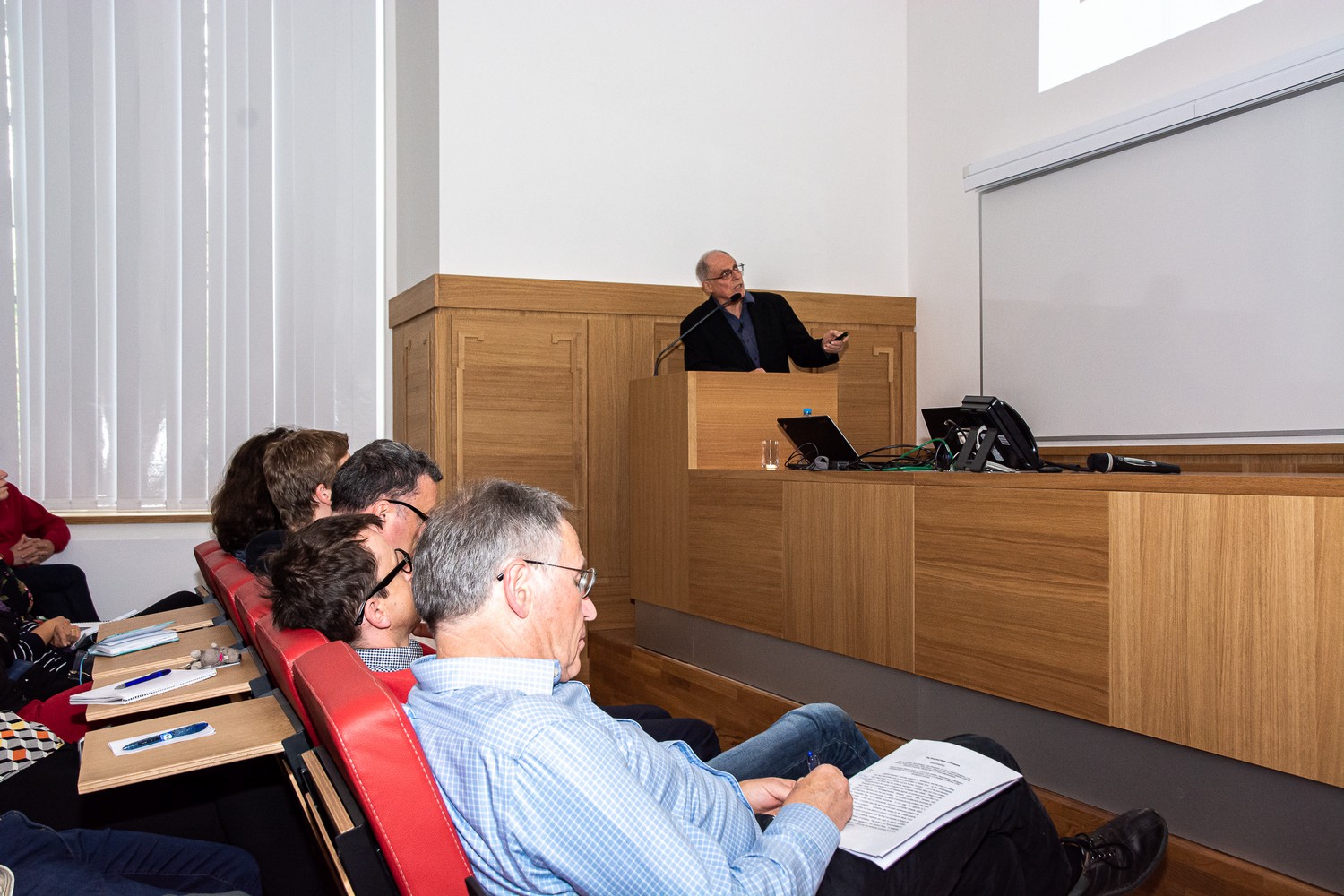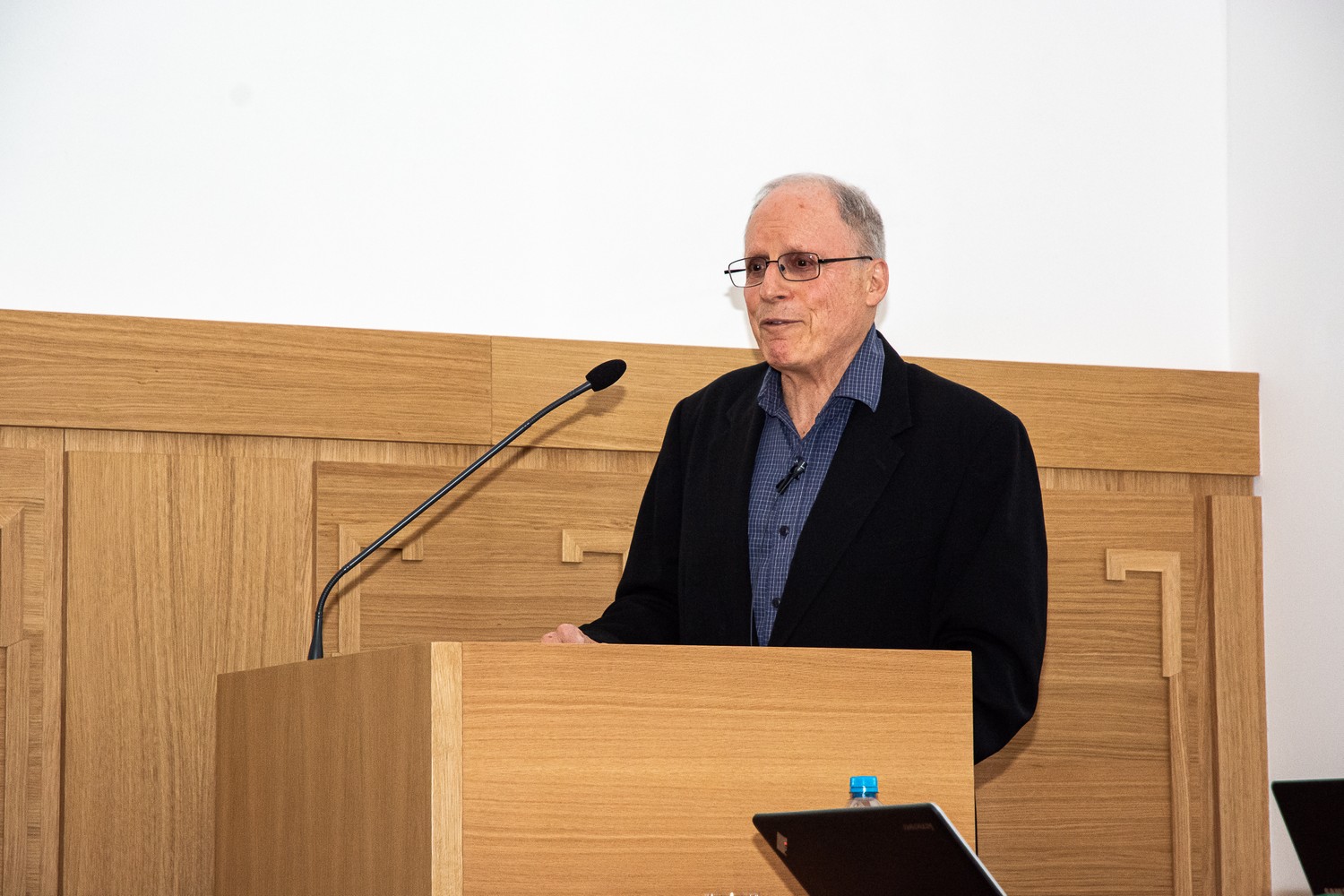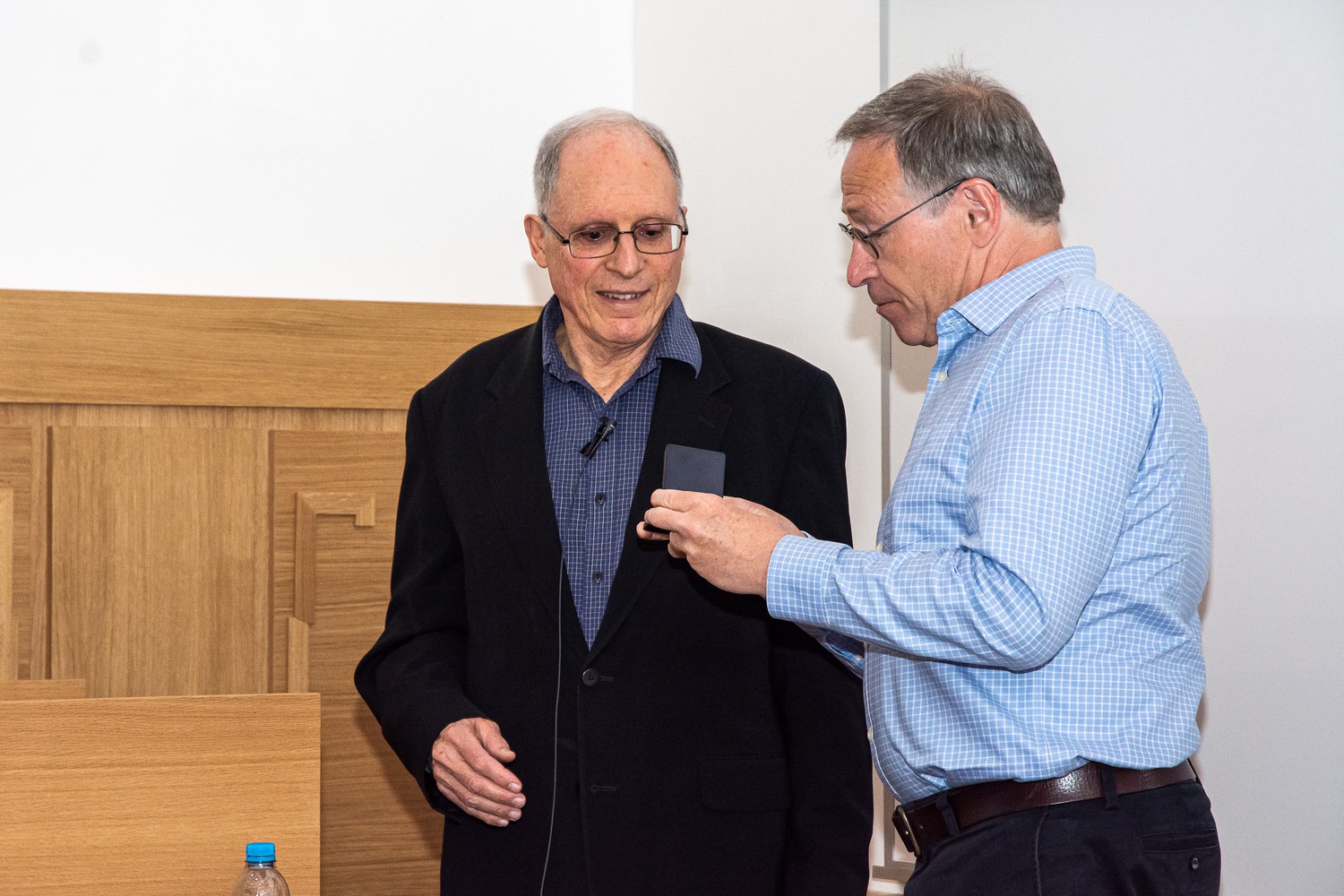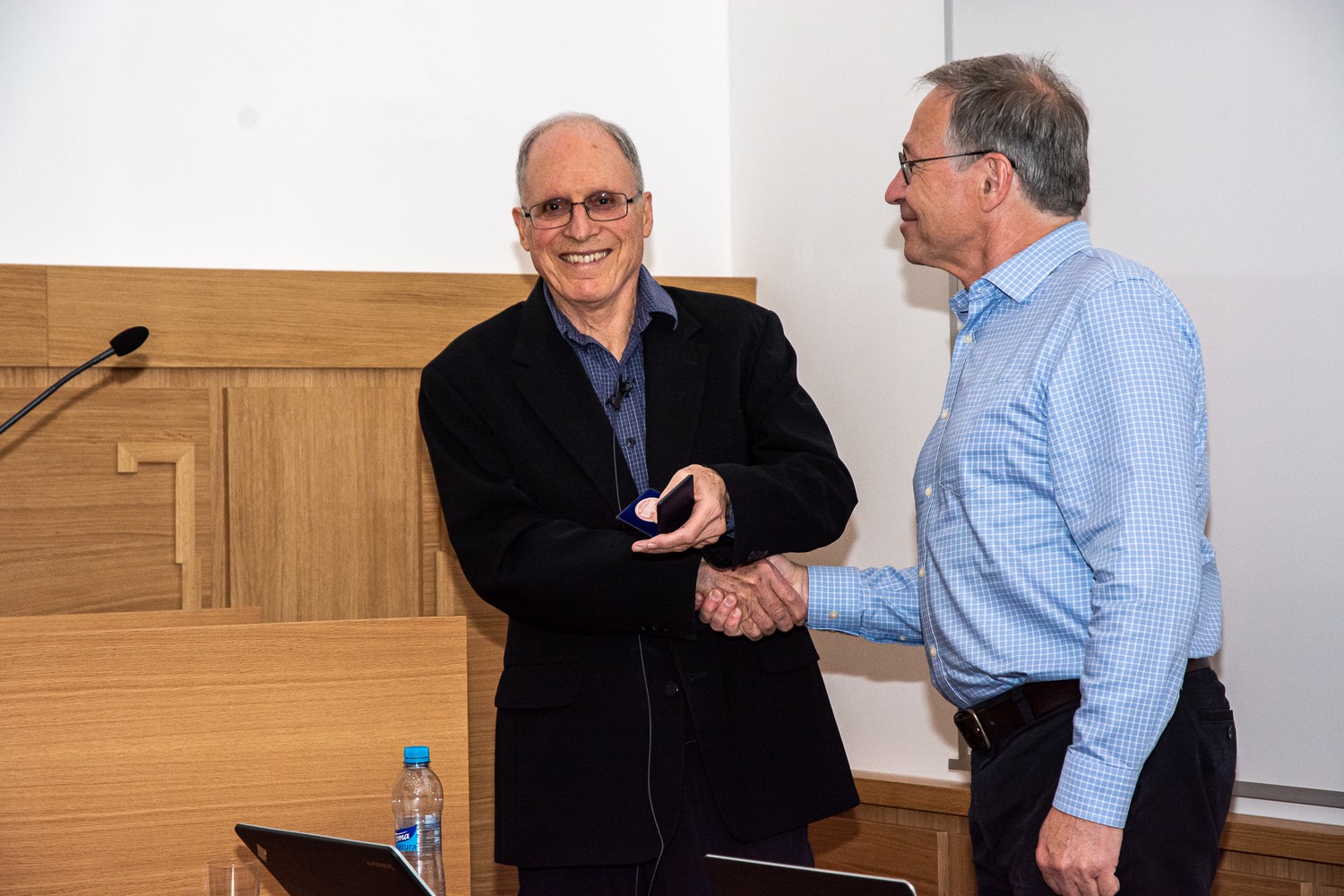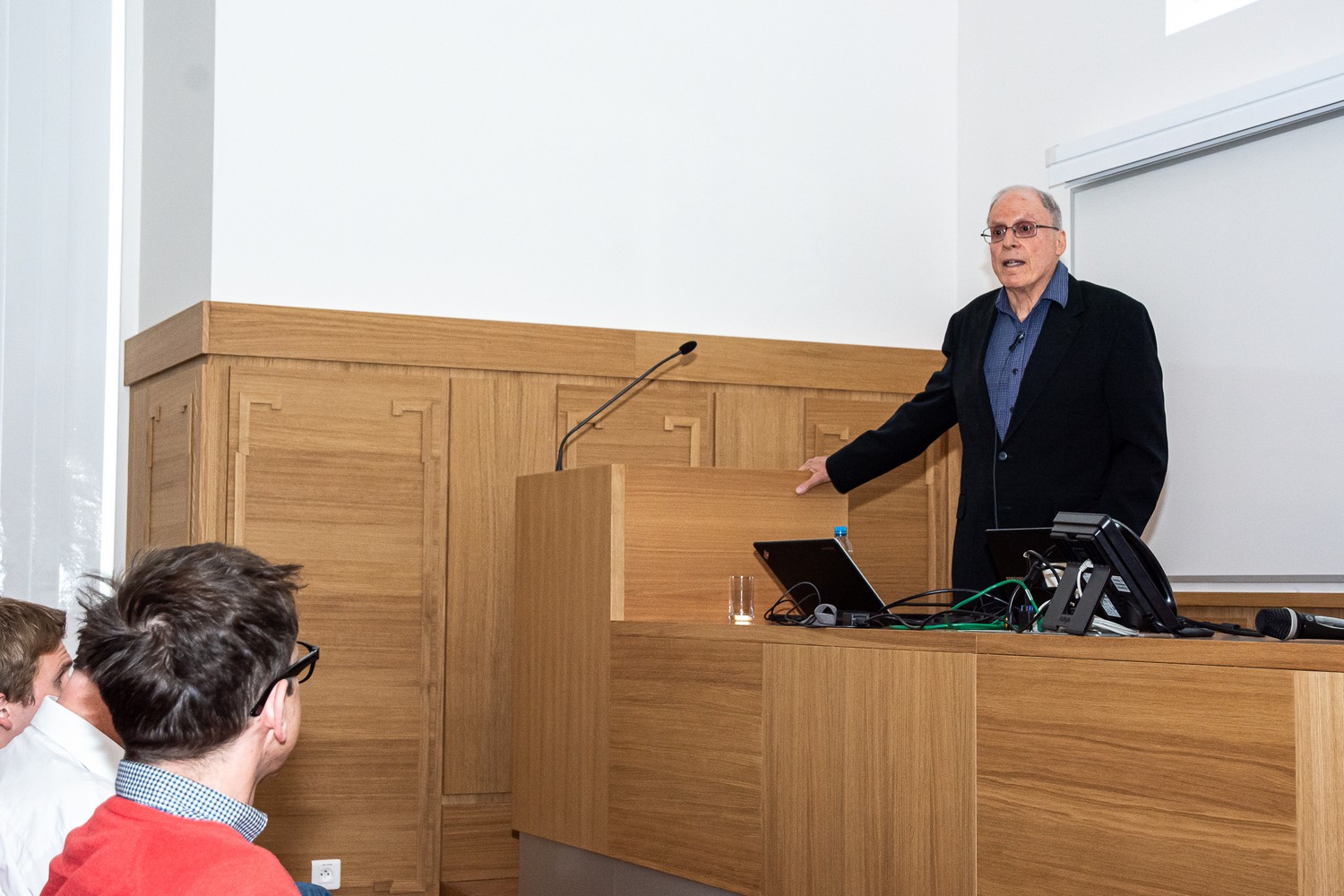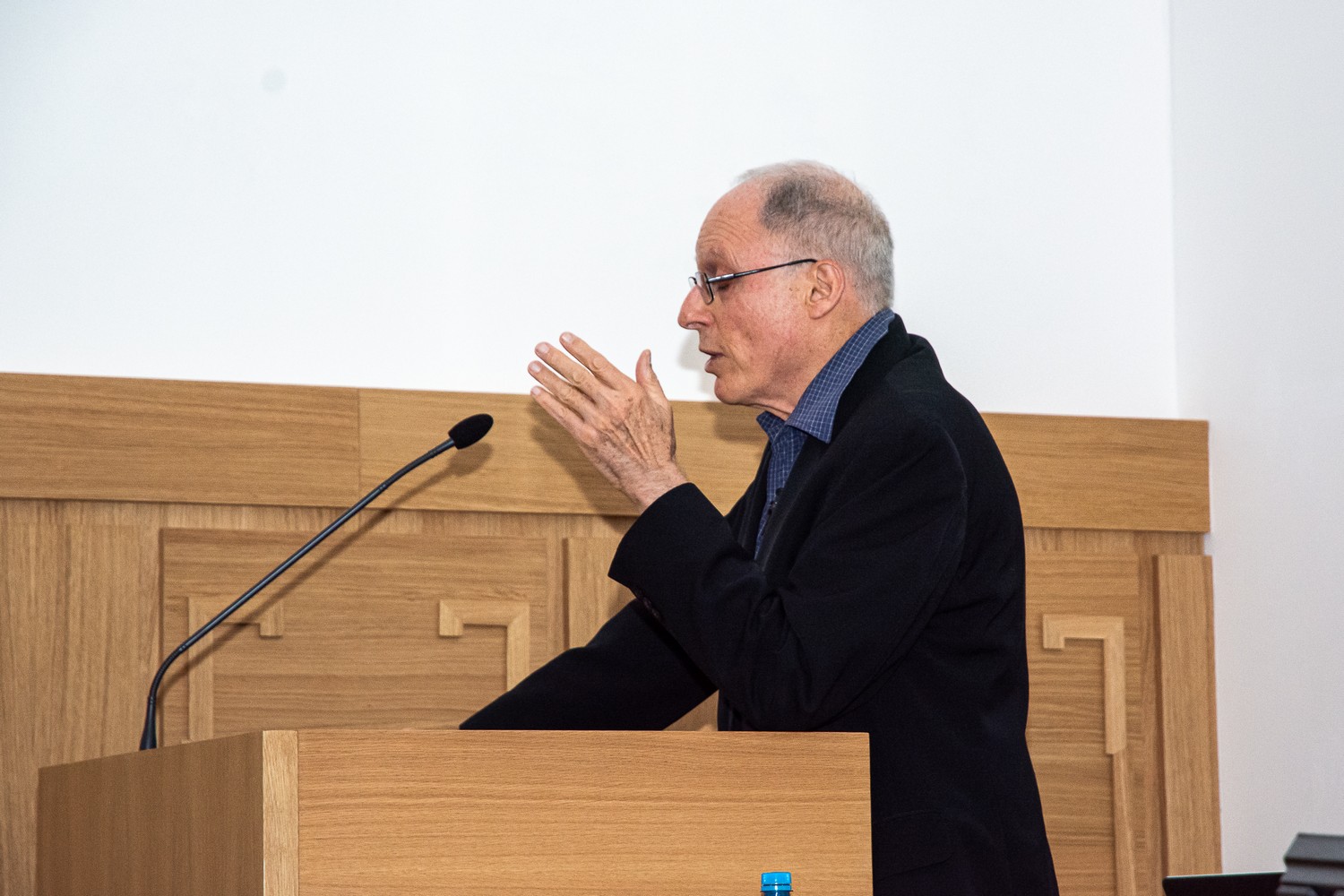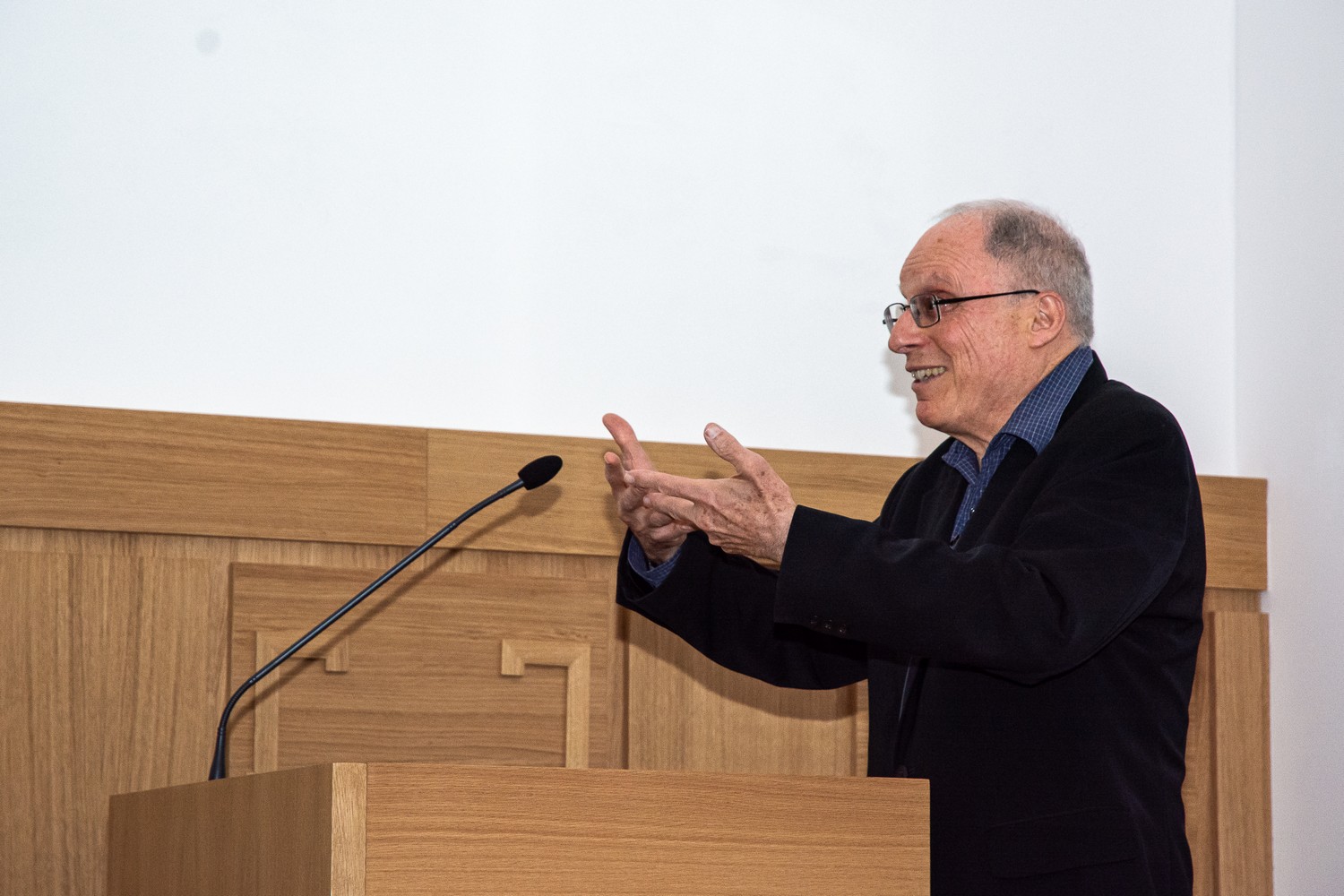
Prof. David Eisenberg (Departments of Biological Chemistry and Chemistry & Biochemistry, Howard Hughes Medical Institute, University of California Los Angeles, California, USA)
The Amyloid State of Proteins
Abstrakt
Amyloid diseases, including Alzheimer’s, Parkinson’s, and the prion conditions, are each associated with a particular protein in fibrillar form. At the morphological level, these fibers appear similar and are termed “amyloid.” From x-ray and electron diffraction, we found that the adhesive segments of amyloid fibers are short protein sequences which form pairs of interdigitated, in-register beta sheets. These amyloid fibrils were long suspected to be the disease agents, but evidence suggests that in at least some of the neurodegenerative diseases, smaller, often transient and polymorphic oligomers are the toxic entities. In attempts to determine structures for such oligomers, we have discovered segments of amyloid-forming proteins that form toxic, antiparallel beta, out-of-register structures. In one case, the oligomer is a cylindrical barrel, formed from six anti-parallel, out-of-register protein strands, which we term a cylindrin. In another case, the oligomer is an open, continuous cylindrin-like structure that we term a corkscrew. Cylindrins offer models for the hitherto elusive structures of amyloid oligomers, and are distinct in structure from amyloid fibrils. From the known structure of the spine of an amyloid fibril, we find it is possible to design an inhibitor of fibril formation. Computational methods are used to identify amyloid-forming segments, and in the design of inhibitors. The protein p53, found mutated in half of human cancers, in some cases aggregates into amyloid fibrils. A designed inhibitor of p53 aggregation is effective in rescuing the beneficial functions of p53 in mouse models of high grade serous cancers.
